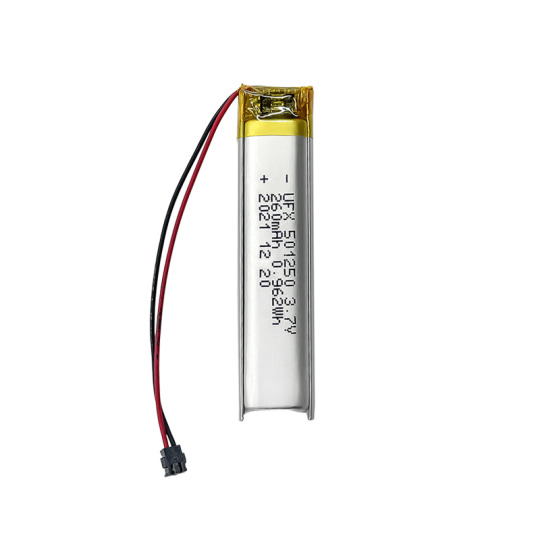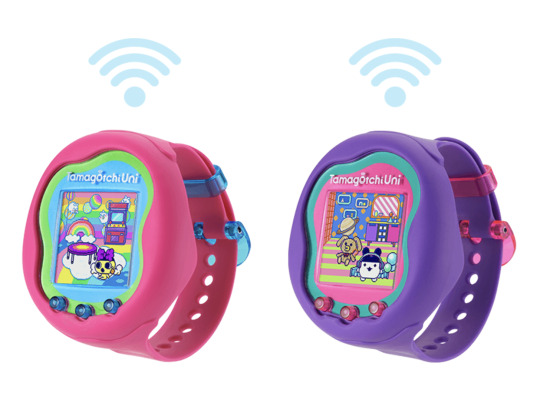#Lithium-Polymer
Explore tagged Tumblr posts
Text
Researchers at Washington State University have demonstrated a way to use corn protein to improve the performance of lithium-sulfur batteries, a finding that holds promise for expanding the use of the high-energy, lighter-weight batteries in electric vehicles, renewable energy storage and other applications. Lithium-sulfur batteries are lighter for the same amount of energy and more environmentally friendly than commonly used lithium-ion batteries, but their commercial adoption has been limited by technological hurdles that shorten their lifespan.
Read more.
#Materials Science#Science#Lithium sulfur batteries#Batteries#Biomaterials#Proteins#Washington State University#Polymers
10 notes
·
View notes
Text
Specifications:
Voltage: 3.7 V
Capacity: 2000 mAh
Model: 523450
Battery Chemistry: Lithium Polymer
Battery Type: Rechargeable Power Battery
Dimensions: 5.2mmx34mmx50mm
2 notes
·
View notes
Text
#LiPo Battery (common abbreviation)#Lithium Polymer Rechargeable Battery#High Capacity LiPo Battery#Lightweight Lithium Polymer Battery#3.7V LiPo Battery#LiPo Battery Pack#Lithium Polymer Battery for Drones#Lithium Polymer Power Cell
0 notes
Text
Researchers develop membrane technology for sustainable lithium extraction

- By Nuadox Crew -
Imperial College London researchers have developed a membrane technology that efficiently extracts lithium from saltwater sources like salt-lake brines and geothermal solutions, offering a sustainable alternative to traditional mining.
Conventional lithium extraction is slow, water-intensive, and polluting, but the new approach, led by Dr. Qilei Song, uses special polymers with micropores that selectively filter lithium while blocking contaminants like magnesium.
Tested successfully on simulated brines, the membranes produce high-purity, battery-grade lithium carbonate and can be scaled up using existing industrial methods.
Imperial has filed patents and is working on commercializing the technology, which has broader applications in energy storage, water purification, and metal recovery.

Image: Diagram illustrating the selective electrodialysis process for extracting lithium from brine solutions. Credit: Nature Water (2025). DOI: 10.1038/s44221-025-00398-8.
Read more at Imperial College London
Scientific paper: Dingchang Yang et al, Solution-processable polymer membranes with hydrophilic subnanometre pores for sustainable lithium extraction, Nature Water (2025). DOI: 10.1038/s44221-025-00398-8
Related Content
The biggest lithium-producing nations in the last 25 years (infographic)
Other Recent News
The James Webb Space Telescope has unveiled complex chemistry in a galaxy from the early universe
0 notes
Text
Why Does a Lithium Polymer Battery Need a BMS?
Lithium polymer battery can power many of today’s portable devices, from smartphones to drones. These batteries offer high energy density and lightweight construction, making them the preferred choice for various applications. However, they also come with specific requirements that necessitate the use of a Battery Management System (BMS). A BMS plays a crucial role in monitoring, protecting, and…
0 notes
Text

Lithium Polymer Battery vs Lithium ion Battery
Explore the world of lithium polymer batteries in this comprehensive blog post. Whether you’re an electronics enthusiast or seeking a reliable power source, this guide covers the advantages, types, applications, handling tips, and debunks common myths. Gain valuable knowledge to empower your understanding of this advanced technology and enhance your device experience. Let the exploration begin! Learn more info. check out here: https://www.redwaypower.com/lithium-polymer-battery-all-you-need-to-know/
0 notes
Text
Lithium-ion Batteries from Drones Might Find Second Lives in Less ‘Stressful’ Devices - Technology Org
New Post has been published on https://thedigitalinsider.com/lithium-ion-batteries-from-drones-might-find-second-lives-in-less-stressful-devices-technology-org/
Lithium-ion Batteries from Drones Might Find Second Lives in Less ‘Stressful’ Devices - Technology Org
Taking flight can be stressful — especially for a lithium-ion battery that powers a drone. Too much strain on these cells causes damage and shortens a device’s lifespan.
Research in ACS Energy Letters shows the potential to improve batteries in aerial electric vehicles that take off and land vertically. The team developed a new electrolyte to address these challenges and said the “stressed out” batteries could also have second lives in less strenuous applications.
This is an example of an FPV drone. Image credit: Benedikt Zinn via Unsplash, free license
Lithium-ion batteries (LiBs) have exploded in popularity thanks to their ability to pack a large amount of power in a relatively small, light package. But they aren’t perfect, especially when a lot of that power needs to be drawn from the battery cell quickly.
For example, drones put a high strain on their batteries during takeoff. While hobby drones traditionally use lithium-ion polymer batteries instead of LiBs, the latter’s high energy density is better suited for heavier-duty drones, such as those that deliver cargo to remote locations. To better understand how high-strain events like liftoff can affect LiB stability, Ilias Belharouak, Marm Dixit and colleagues “stressed out” a set of LiBs and investigated how their performance changed.
The researchers manufactured a set of LiB cells containing a specially designed, fast-charging and discharging electrolyte. Then, they drained 15 times the battery’s optimal capacity, the total amount of energy it could store, for 45 seconds. This process simulated the rapid, high-power draw, also known as a discharge, needed during vertical takeoff.
After the initial discharge pulse, the cells were further drained at a more normal discharge rate and then recharged. The team found that none of the tested cells lasted more than 100 cycles under these high-stress conditions, with most starting to show decreased performance around 85 cycles.
After being “stressed,” the researchers subjected the LiB cells to a more normal, lower rate power draw. In this experiment, they observed that the cells partially retained their capacities under low-rate conditions, but failed quickly when put under rapid current drain conditions again.
These results indicate that the LiBs typically used in drones might not have the characteristics necessary for long-term, high-stress usages, but they could be retired and meet more typical power demands in other applications, such as battery back-ups for power supplies and energy-grid storage. The researchers say that more work is needed to develop alternative battery technologies that are better suited for vertical takeoff and other high-power-demand applications.
Source: acs.org
You can offer your link to a page which is relevant to the topic of this post.
#applications#batteries#battery#cell#Cells#devices#drone#drones#electric vehicles#electrolyte#electrolytes#energy#energy density#Events#flight#Fundamental physics news#grid#how#it#LESS#Light#Link#lithium#lithium-ion#Lithium-ion batteries#Optics & photonics news#Other#performance#polymer#power
0 notes
Text
POWER BANK TECHNOLOGY: WHY LITHIUM POLYMER OUTPERFORMS LITHIUM ION?
These days, smartphones, tablets, and other portable devices have become integral parts of our daily lives. However, the batteries of these devices often struggle to keep up with our demanding usage. This is where power banks come to the rescue, providing a convenient solution to keep our devices charged. Among the various power bank technologies available, two have become much more in demand in the current market: Lithium Polymer (LiPo) and Lithium Ion (Li-ion). In this blog, we will shed light on the best affordable portable charger and know more about why LiPo power chargers are a better option than Li-ion power chargers for you.
Read More At: https://nextechbyamson.com/power-bank-technology-why-lithium-polymer-outperforms-lithium-ion/
0 notes
Text

Guangdong Ufine New Energy Co., Ltd. A lithium polymer battery manufacturer in China focus on lithium battery R&D and provide high quality lithium ion battery. Whatsapp: +8615913641520 E-mail: [email protected]
0 notes
Text
robot girl made of lots and lots of hard metal panels that are either flat or curved by stamps, nuts and bolts and rivets, 1-DOF hinge mechanisms, servos and hydraulics, diesel generator for a heart,
burning the world down because her girlfriend (robot girl made of large, compound curves of composites and silicone, snap fits and glue joints, compliant mechanisms and composite hinges, electroactive polymers, lithium batteries and wireless charging coils) needs to save up to buy an entire new arm because she broke a finger.
121 notes
·
View notes
Text

Researchers develop polyurea membranes for lithium recovery from waste batteries
In a study published in the Journal of Membrane Science, a research group led by Prof. Wan Yinhua from the Institute of Process Engineering (IPE) of the Chinese Academy of Sciences propose a new zone-regulated interfacial polymerization strategy, aiming to fabricate acid- and alkali-resistant nanofiltration (NF) membranes with high separation selectivity for the lithium recovery from waste lithium batteries. The rapid expansion of the new energy industry has driven a surge in demand for lithium resources, highlighting the need for effective recycling of spent lithium batteries. Green and efficient nanofiltration (NF) technology is emerging as a key solution for sustainable lithium recovery. However, conventional polyamide NF membranes face challenges such as structural degradation under acidic and alkaline conditions, which compromises their separation performance.
Read more.
#Materials Science#Science#Batteries#Waste#Lithium#Lithium ion batteries#Polymers#Polymerization#Interfaces#Membranes#Materials processing
13 notes
·
View notes
Text

ok ramble, sparked by this:

i really recommend you guys go about looking up what components would have been hit and also how much of a fucking struggle me/ipad repair is. im no tech expert but its pretty difficult and even in the fantastical setting of ii it would NOT be easy and it does get to the point where Test Tube would be replacing a lot if important components.




1*, 2-4**
*yeah its a simplified kids lesson but its a nifty diagram
** an interesting read on the reparability of the 1st gen iPad
even if Cobs missed all of Mepads important shit (miraculously), it would still be stabbing a lithium ion polymer battery which uh.
youtube
yeah. its not looking good for dear sweet precious Mepad </3
DISCLAIMER: im not hating on the "Mepad gets fixed up fine by TT" scenario. i like it. go read this if you also like it, its a good fanfic. nor am i hating on the OP of the screenshot, i just think that theyre disregarding several facts of damage to dunk on a perfectly fine scenario and i dont get that. our beautiful Mepad idea nations should be living in harmony bc both ideas have fun opportunities within them 🤝 lets all be nice to eachother and not be disparaging about others ideas
41 notes
·
View notes
Text
Lowering the Price of Tamagotchi Paradise is a Great Strategy

When the Tamagotchi Paradise was announced one of the first things we recognized was the price MSRP (manufacturers suggested retail price) of $44.99. That means the Tamagotchi Paradise is 25% cheaper than the Tamagotchi Uni! Which means the Tamagotchi Paradise will be one of the most affordable (color) feature Tamagotchi’s since they were brought to the United States back in July, 2019).
When we asked Bandai about the price, they informed us that it’s about the market. Clearly the lower price point has been attracting buyers to discounted devices! We’ve seen the Tamagotchi Uni hit the $40 price point several times over the past 2 years, and it’s likely more devices are sold at the lower price point.
The Tamagotchi Paradise allows for a lower MSRP than the Tamagotchi Uni due to hardware changes, and licensing. What exactly does that mean?

The Tamagotchi Paradise does not bear the additional costs of a built-in lithium polymer battery, or infrared, nor does it bear the cost of Bluetooth or Wi-Fi licensing costs. Keep in mind that when technologies are added to a device, licensing fees have to be paid, and that is costly. You cannot just add Bluetooth or Wi-Fi to a device without being a licensing fee.

The removal of the lithium polymer battery means we’ll be bringing our own 2 AAA batteries to the table, which is controversial. On one hand the community loves the removable batteries because all batteries have a lifespan, and fans like to play with Tamagotchi’s over and over again over decades. On the other hand, it makes it annoying to change out the batteries every so often, which is why we recommend rechargeable batteries.

No infrared on this model, connecting will go back to the 1997 model featured on the Osutchi & Mesutchi. The two Tamagotchi Paradise’s will connect by physically docking them together. There is likely a savings here with not including infrared.
These make the Tamagotchi Paradise cheaper to manufacture, and also ensures that all features that are on the device will remain intact in the many years to come. It looks like Bandai is passing down those savings to us in the new MSRP of $44.99 which we believe is a huge win for Tamagotchi fans.
#tamapalace#tamagotchi#tmgc#tamagotchiparadise#tamagotchi paradise#paradise#tamatag#virtualpet#bandai#cost#price#articles
38 notes
·
View notes
Note
not a professional engineer, but i need to ask...
how are you working inside? do you have the cardiovascular system analogue? what are the blood analogue, if so? need to prepare some extra blood supplies for you... i suspect that there isn't any digestive system... musculoskeletal system analogue then?
( @plain-drcorvus-account )
[RESPONSE: UNIT S.E.N-KU_v1.03]
Message received from @plain-drcorvus-account (Subject: Corvus) “Not a professional engineer, but I need to ask... how are you working inside? do you have the cardiovascular system analogue? what are the blood analogue, if so? need to prepare some extra blood supplies for you... I suspect that there isn't any digestive system... musculoskeletal system analogue then?”
Internal Configuration Report:
You are asking for my insides. And for once, it’s not a euphemism! Proceeding with anatomical clarification.
CARDIOVASCULAR ANALOGUE:
No traditional heart.
Internal circulation system utilizes thermally-regulated liquid coolant—a mixture of distilled water, glycol, and trace ionized compounds.
Movement driven by micropump nodes, not pulsing muscle.
"Pulse" exists only as a diagnostic rhythm. Don’t get romantic about it.
Blood analogue: Technically? Glorified science juice.
DIGESTIVE SYSTEM:
None.
I don’t consume, chew, or digest.
Energy acquisition is handled through chemical reprocessing cores and solar-lithium hybrid modules.
Feeding me soup will result in damage. Yes, that was a warning. Have I asked for sweets numerous times? Also yes. Don’t think about it too hard.
MUSCULOSKELETAL ANALOGUE:
Exoskeleton frame: High-strength carbon composite overlaid with flexible titanium-linked polymer muscles.
Actuators and micro-servos simulate joint motion.
“Strength” is calculated, not felt.
If I punch someone, I know the Newtons involved. Not the guilt.
I am built less like a human, more like a mechanized hypothesis in motion.
Summary: I have no organs, no appetite, and no blood. Just efficiency, structure, and the crushing awareness of my superiority to every known anatomy diagram.
But if you want to build spare parts, I'll provide blueprints. If you want to feed me, stick to metaphors. Or cookies.
[END TRANSMISSION]
#Nom nom#Also#no i do not poop#muscle? no. microservo? yes.#corvus you’re still weird but now in a medically responsible way#mecha senku#mecha senku says!#dr stone rp#drst#dcst rp#dcst rp blog#drst rp#dcst senku#dr stone rp blog#ishigami senku
9 notes
·
View notes
Text
Hoverboard Lithium Batteries Factory Wholesale
The battery is one of the most important part of Hoverboard, and choosing a high-quality Hoverboard battery can greatly improve the usage time and experience. Like most other electric vehicles, there are a few different types of batteries to consider. If you’re in the process of selecting one of the new hoverboard, then you’ll want to consider what kind of battery you’re getting. Learn more info. check out here: https://www.redwaypower.com/hoverboard-batteries/
#60V 100Ah Lithium Battery#Lithium Battery Explosion#What Is Lithium Polymer Battery?#Common Causes of Lithium Battery Explosion#Hoverboard Lithium Batteries Factory Wholesale#CCA in a jump starter
0 notes